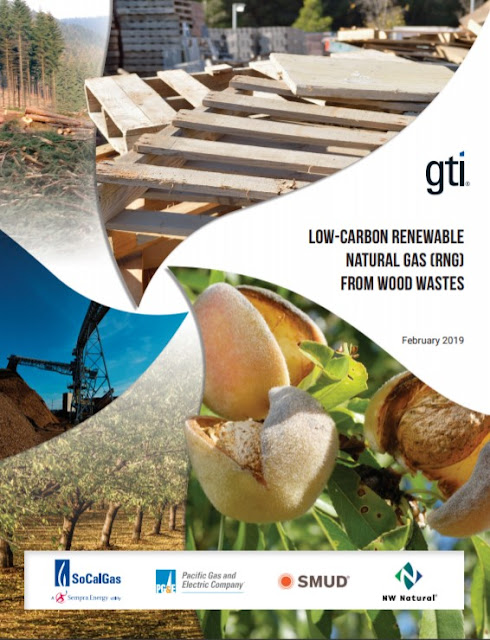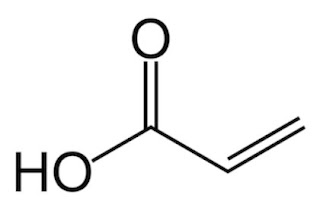GTI assesses the potential to produce renewable natural gas from wood wastes
Type of post: NEWS IN BRIEF.
GTI has
released a very interesting study that intends to be a “blueprint” for
converting an existing biomass facility into a Renewable Natural Gas (RNG)
production site using wood waste feedstock and some of the existing
infrastructure. The study, prepared for CARB, PG&E, SoCalGas, Northwest
Natural and SMUD, was conducted to better understand the value, benefits and
cost of utilizing wood wastes to reduce greenhouse gas (GHG) emissions. A biomass
power plant in Stockton (California) was the host site for the engineering
design effort.
Nota de prensa: “GTI
Quantifies Opportunity to Produce Low-Carbon Renewable Natural Gas (RNG) from
Wood Wastes”, 14/2/2019.
Figure 1. Cover of the study "Low-Carbon Renewable Natural Gas (RNG) from Wood Wastes"
Highlights:
- New RNG production facilities using the
commercial technologies outlined in the analysis could eliminate 99% of
conventional air pollutants compared to existing operational biomass power
plants.
- The study confirms the ability to produce
large quantities of RNG with very low carbon intensity for use in the transportation,
industrial, commercial and residential energy sectors. In the base
configuration of the study, one plant could displace approximately 170,000 tons
of CO2 vehicle emissions each year, which is roughly equal to
offsetting the emissions from 400 million vehicle miles (almost 650 million
vehicle km).
- According to the analysis, California has the potential to produce tens of billions of cubic feet of RNG per year from the wastes that are now being used for biomass-based electricity. The gasification technology provides an additional option for addressing the woody biomass waste in California while providing a clean renewable energy source.
- According to the analysis, California has the potential to produce tens of billions of cubic feet of RNG per year from the wastes that are now being used for biomass-based electricity. The gasification technology provides an additional option for addressing the woody biomass waste in California while providing a clean renewable energy source.





